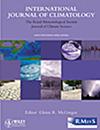Interdecadal Variation of Spring Rainfall in Taiwan and Modulations of Global Warming and Pacific Decadal Oscillation
Abstract
Spring rainfall in Taiwan during February–April (FMA) shows a profound decreasing trend in the period 1980–2022. This decreasing trend is found to be jointly modulated by the trend components of global warming and interdecadal evolutions of the Pacific Decadal Oscillation (PDO) from its positive to negative phase over the past four decades. In contrast, interdecadal oscillation components of the PDO weakly impact interdecadal decreases in Taiwan's spring rainfall. Both global warming and interdecadal PDO variability cause moderate warming in the tropical western North Pacific and strong warming over the northern North Pacific. The former causes height fields over the tropical western Pacific to shift northward to result in an anomalous cyclone in association with the weakening of the subtropical high to the south of Taiwan. This anomalous cyclone is also affected by a Matsuno-Gill-type response to sea surface temperature warming and an anomalous convergent centre over the tropical western Pacific around 150° E. In the northern North Pacific, strong SST warming displaces height fields northward to make an anomalous anticyclone via the weakening of the Aleutian Low. Taiwan is meridionally embedded by the above anomalous cyclone and anticyclone. This circulation pair induces anomalous easterly moisture flux to pass over Taiwan, which then turns southward into the South China Sea. Moisture transport from the tropical region toward Taiwan is suppressed, resulting in an evident decrease in spring rainfall.





 求助内容:
求助内容: 应助结果提醒方式:
应助结果提醒方式:


